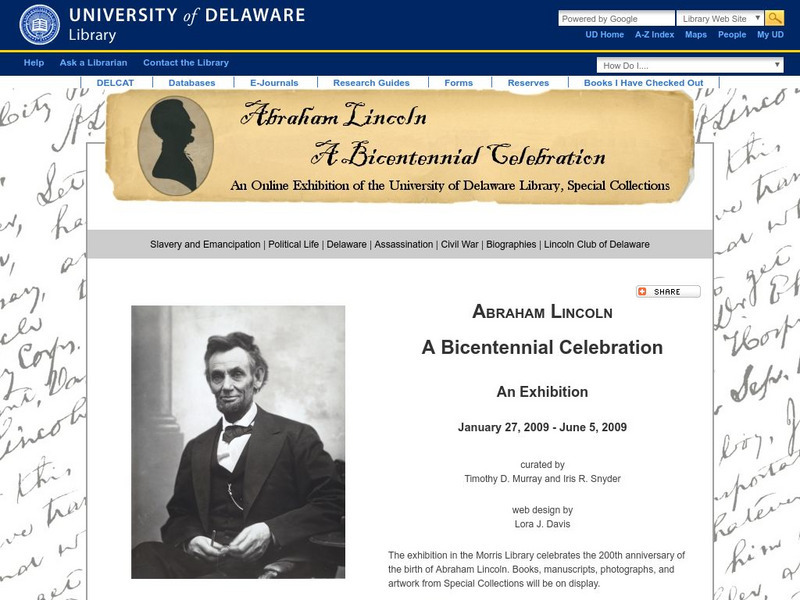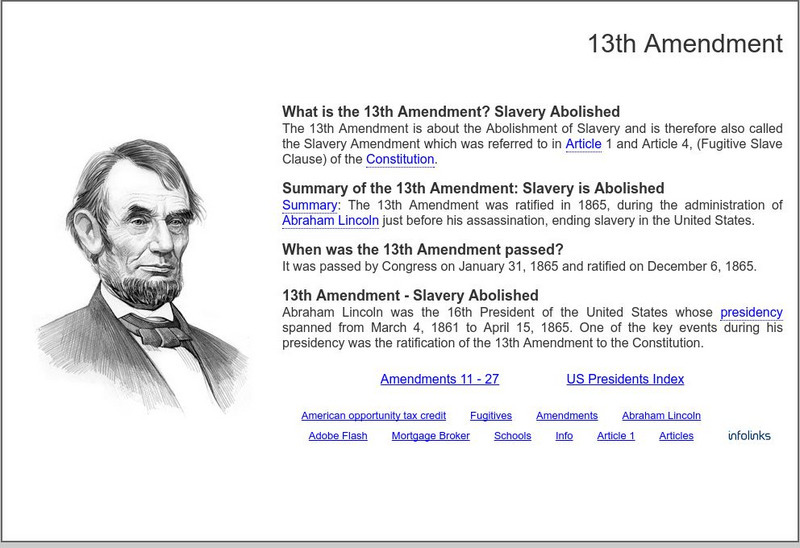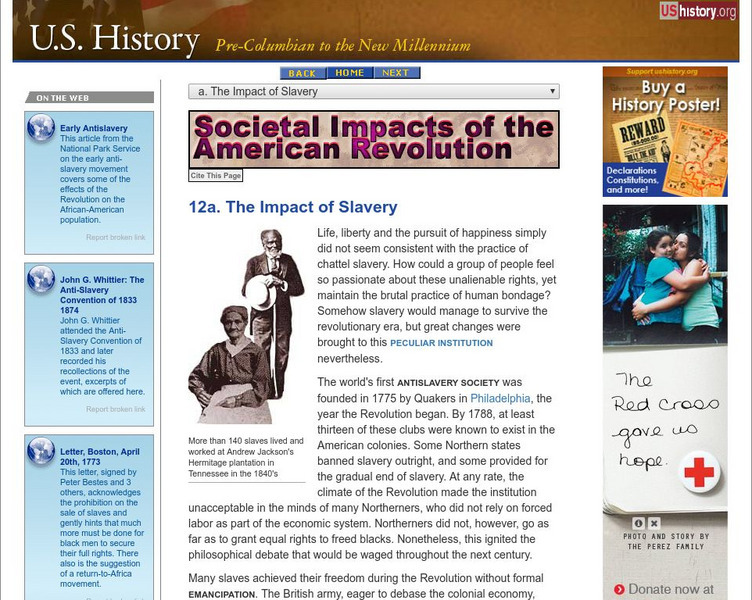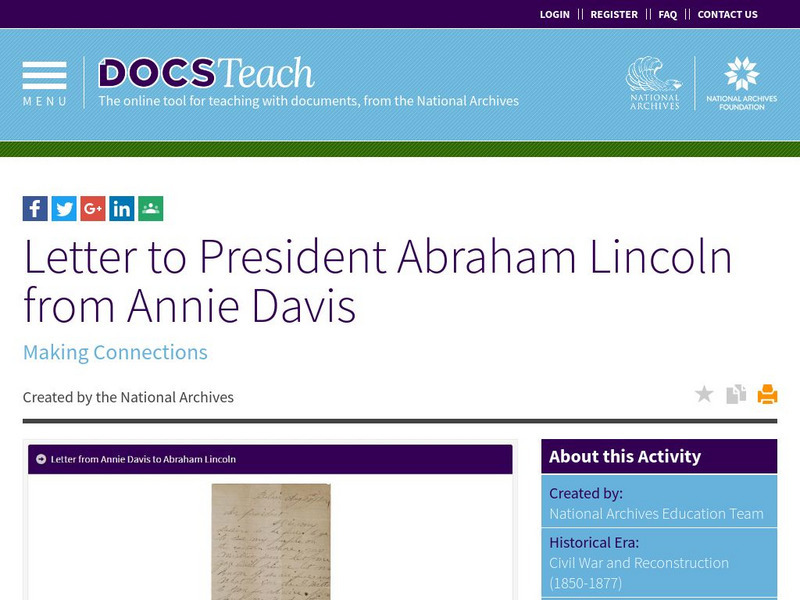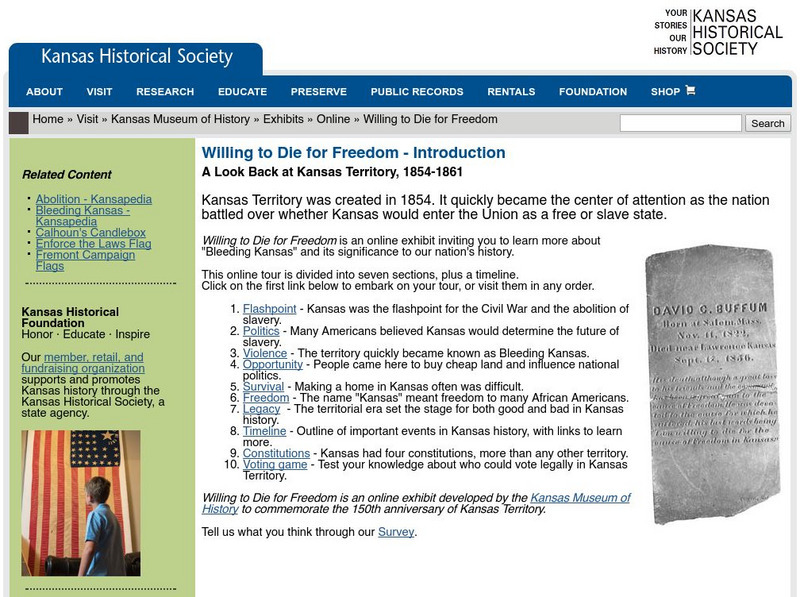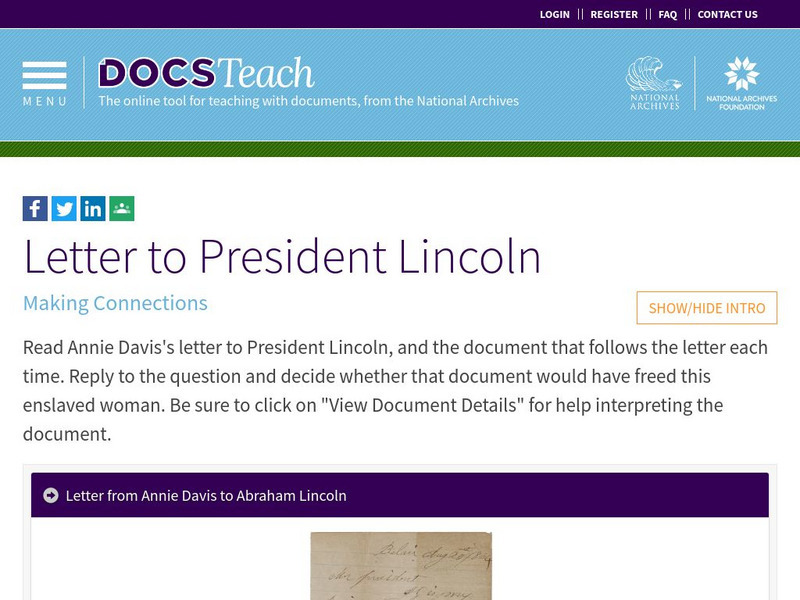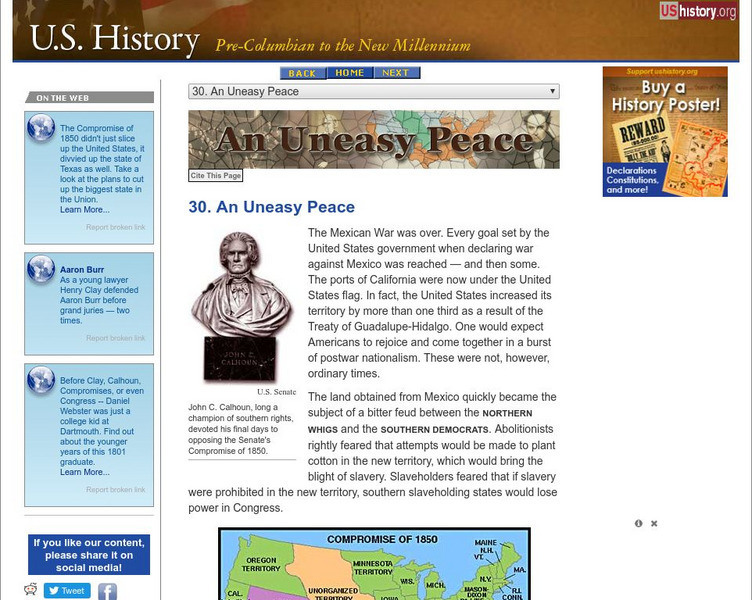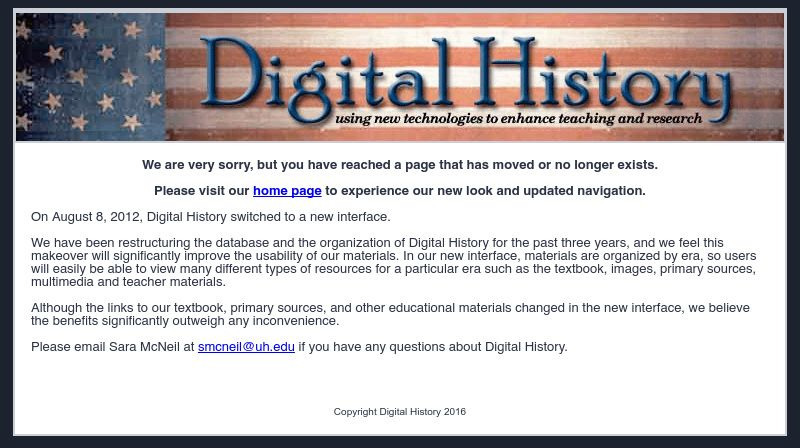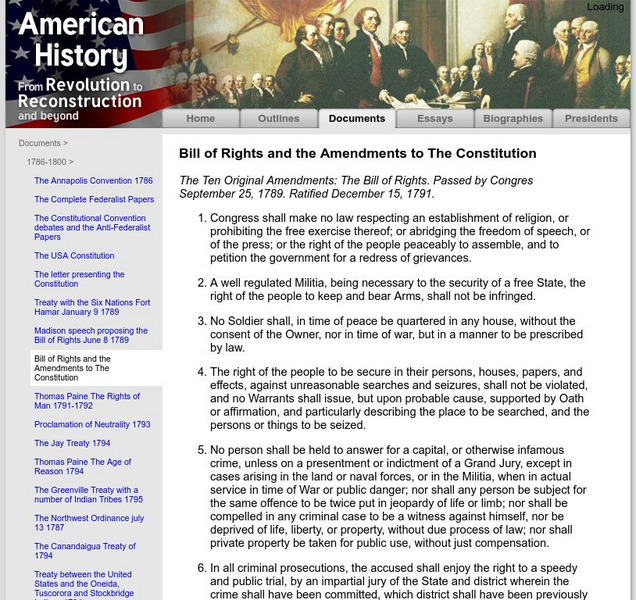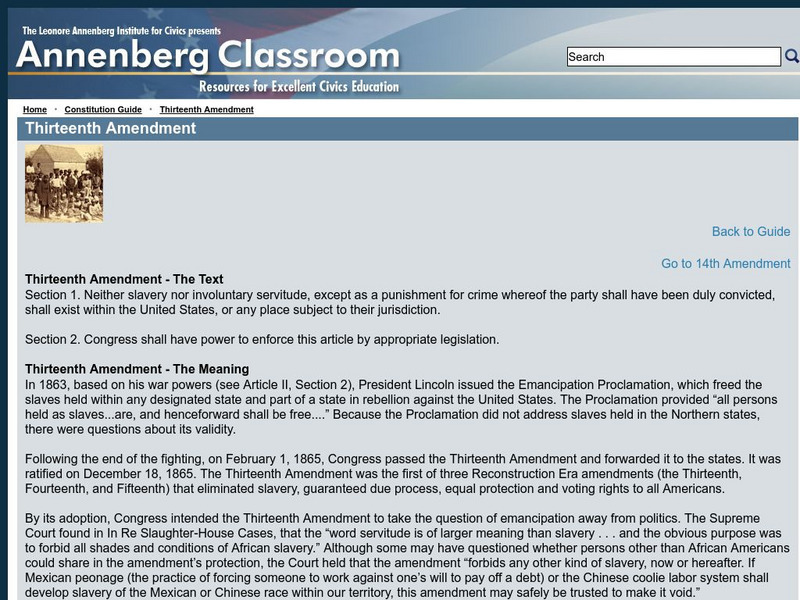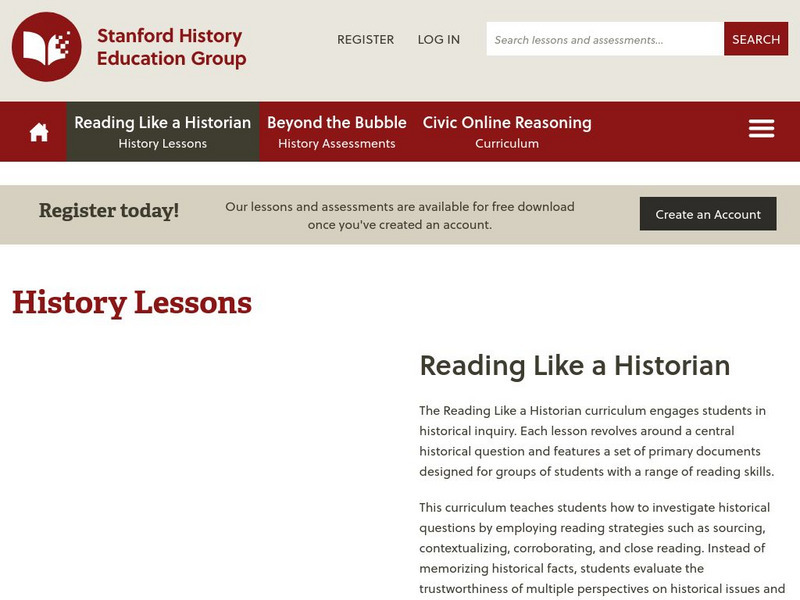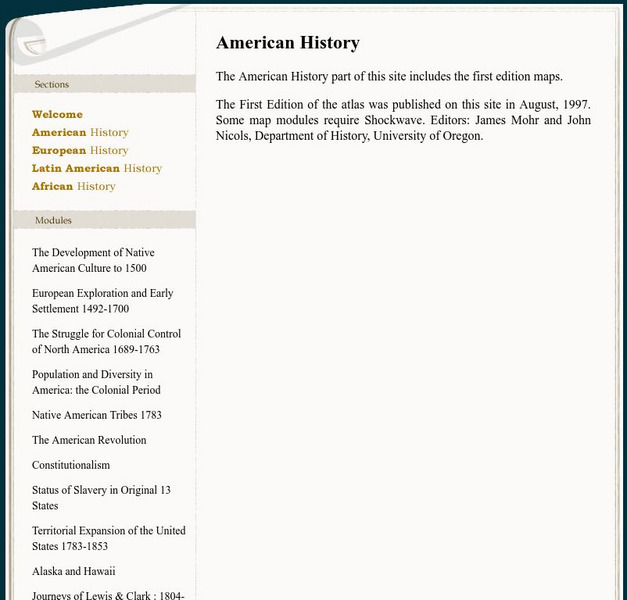Hi, what do you want to do?
Other
University of Delaware: Abraham Lincoln: A Bicentennial Celebration
Commemorating Abraham Lincoln's 200th birthday, this exhibition provides several documents and photographs remembering the President's life. Resources cover his political career, slavery, the civil war and his assassination.
Siteseen
Siteseen: Government and Constitution: 13th Amendment
The 13th Amendment was passed by Congress on January 31, 1865, but not ratified until December 6, 1865. This article provides an explanation and summary of the 13th Amendment or Fugitive Slave Clause that abolished slavery.
Siteseen
Siteseen: Government and Constitution: Whig Party
This article contains an overview of the history of the rise and fall of the Whig Party, its leaders, their beliefs, and the demise of the party over the issue of slavery.
Independence Hall Association
U.s. History: The Impact of Slavery
See how the ideals of freedom and equality garnered from the American Revolution were reflected in the early abolitionist movement and the banning of slavery in many Northern state constitutions as the new country was forming.
Stanford University
Stanford Encyclopedia of Philosophy: Aristotle's Theory
Excellent introduction from the Stanford Encyclopedia of Philosophy to Aristotle's political theory. Describes his theory of constitutions and citizenship and includes a bibliography at bottom.
Constitutional Rights Foundation
Constitutional Rights Foundation: An Overview of the African American Experience
Lesson with article and questions for discussion on the experience of African-Americans beginning with the slave trade.
National Constitution Center
National Constitution Center: Emancipation Proclamation [Pdf]
Classroom ready resource includes primary resource document of the Emancipation Proclamation, background information and questions for discussion.
US National Archives
National Archives: Letter to President Abraham Lincoln From Annie Davis
"Will you please let me know if I am free?" wrote Annie Davis. Annie Davis was a slave who wrote this letter to President Lincoln 20 months after the Emancipation Proclamation. To understand her confusion, examine the following documents...
Stanford University
Sheg: Document Based History: Reading Like a Historian: Reconstruction Sac
[Free Registration/Login Required] Young scholars use primary source documents to investigate central historical questions. In this structured academic controversy, students examine constitutional amendments, a Black Code, a personal...
PBS
Pbs Learning Media: The Reconstruction Amendments
For this interactive lesson, students will understand and explain the key provisions of the 13th, 14th and 15th Amendments to the U.S. Constitution, commonly referred to as the Reconstruction Amendments.
Curated OER
Etc: Slavery and Slave Trade, 1830 1850
A map of the United States during the period of 1850 to 1850 showing the effects of slavery, the slave trade, and the abolition movement on territorial development. The map uses colored patterns to indicate the areas and phases of...
Curated OER
Etc: Slavery and the Slave Trade, 1830 1850
A map of the United States during the period of 1850 to 1850 showing the effects of slavery, the slave trade, and the abolition movement on territorial development. The map uses colored patterns to indicate the areas and phases of...
Kansas Historical Society
Willing to Die for Freedom: Look Back at Kansas Territory
This online exhibit teaches you about "Bleeding Kansas." Follow the hyperlinks to obtain a wealth of information.
US National Archives
Docsteach: Letter to President Abraham Lincoln From Annie Davis
Students will study a letter from Annie Davis, a woman who was enslaved in Maryland and wrote a letter to President Abraham Lincoln during the Civil War to find out if 'we are free.' The students will decide if she received her freedom...
Georgia Humanities Council and the University of Georgia Press.
New Georgia Encyclopedia: The Butler Family
An entry on the Butler family who owned large plantations on the Sea Islands. The "patriarch" was Pierce Butler who also served as a delegate to the Constitutional Convention.
Independence Hall Association
U.s. History: An Uneasy Peace
See what turmoil resulted from the acquisition of new territory after the Mexican-American War. There was great disagreement between those who wanted to abolish slavery and those who wanted to be able to carry slavery into the new lands....
Digital History
Digital History: The Southernmost Colonies: The Carolinas and Georgia
Read about the colonization of the Carolinas and Georgia, find out about the role of slavery in those colonies, and see how the Native Americans were treated.
Digital History
Digital History: The Men of Philadelphia [Pdf]
Find short biographies of twenty-three of the fifty-five delegates to the Constitutional Convention and their ideas about government. These men were certainly not representative of the common man in the new United States, but they were...
Digital History
Digital History: The Civil War Begins [Pdf]
The election of 1860 showed the deep divisions that split the country. With four candidates representing four very different approaches to the issue of slavery, the outcome resulted in the secession of South Carolina, followed eventually...
University of Groningen
American History: Documents: The 13th Amendment
An original 13th amendment restricting lawyers from serving in government that was supposedly ratified in 1819 and removed from the U.S. Constitution during the Civil War.
Annenberg Foundation
Annenberg Classroom: Thirteenth Amendment
Annenberg Classroom resource provides text of the 13th Amendment with an explanation of what it means. Links to related resources.
Stanford University
Sheg: Document Based History: Reading Like a Historian: Early America
[Free Registration/Login Required] The Revolution and Early America unit covers the standard eighteenth century topics that would appear in any textbook. These lessons, however, will push students to dig deeper as they read the documents...
Library of Congress
Loc: Incorporating the Western Territory
A discussion of the process the congress went through in determining what would happen to the territory west of the original thirteen states. Read the final provisions of the Northwest Ordinance of 1787.
University of Oregon
Mapping History: American History
Interactive and animated maps and timelines of historical events and time periods in American history from pre-European times until post-World War II.





